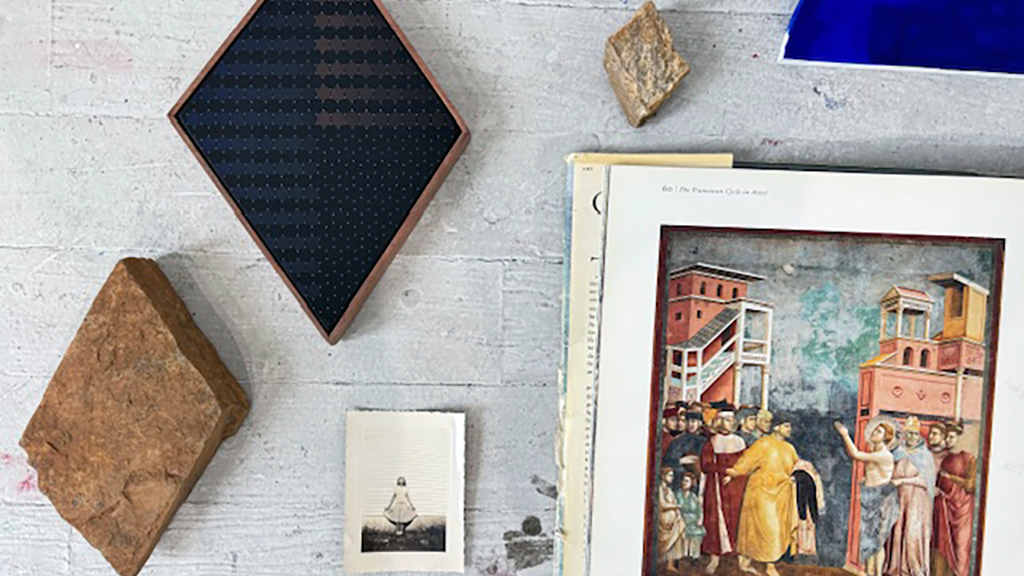
How to Write a Ballad
Two lifelong friends—one a poet, one a painter–talk about it all: labor, joy, and love; the value of slowness; the subtleties of structure; and how to “make it soft, make it low.”
“In a dark time, the eye begins to see.”
—Theodore Roethke
The first of many kindnesses Alison Hall showed me was handing over her Walkman and letting me listen to her Breeders tape all the way to the Reynolda House Museum in Winston-Salem, during a high school field trip.
She must have been a freshman. It was the fall of my senior year. We saw a painting by Lee Krasner. I had never considered the possibility of Jackson Pollock having female peers.
I first noticed Alison Hall because I wondered who had done the only good painting I had ever seen hanging up on the wall beside the art room. Then I realized the painter was the girl who floated down the hallways of our high school in an impeccable mod-style dress, with a Nehru collar and bell sleeves, which I later learned had belonged to her mother in the 1960s. She drove an old Mustang, painted pearl white. One time we ran into each other at a party in an abandoned house in Figsboro. She says I was playing cards. I don’t remember that party, but what I remember most about high school is meeting Alison Hall and realizing, at some point, that she was a reader, too. The only other friend I had who was a reader had become, as my mama puts it, “religion crazy,” but Alison Hall not only read Truman Capote, she had Holly Golightly’s sense of style and was wild like her, too.
We’ve been talking art and books and music, our families and Henry County, Virginia, ever since. She is my long conversation. And she never let me forget I was a reader and a poet, even when I was close to losing my identity as an artist. She has always helped me, as Roethke writes, “climb out of my fear.”
We both went to the small women’s college an hour away in the “big city” of Roanoke. She was a sixteen-year-old freshman while I was a community-college transfer student with a bad haircut that revealed my up-to-then nascent cowlick. We never stopped talking books, trading books, keeping each’s books. I gave her William Carlos Williams’s Pictures From Brueghel. She introduced me to Portrait of a Lady. Her purity of spirit reminded me of that book’s Isabelle Archer.
As Alison Hall, who is one of the most serious students of poetry I know, who is the first, last, and most trusted, most hard-assed, most generous readers of my work reminds me: I have to keep it plainspoken.
Now she makes intensely alive minimalist paintings undergirded by the geometric exactitude and spiritual strangeness of Giotto’s Arena Chapel. Patterned with graphite marks, her paintings mark time and labor, an homage also to the bent backs of her ancestors—bent over a tobacco row, sewing line, kitchen sink. They are both deeply Southern (“The black paint breaks through the silvery graphite mesh like a hole in a screen door,” critic Thomas Micchelli observed) and avant-garde, making the viewer consider the transcendent possibility of the moment. They are too mutable to fully capture in a photograph, like a beautiful woman sometimes is, as Pat Conroy wrote in The Prince of Tides: “She possessed one of those faces that was different every time you saw it. Though lovely in all its forms, it never seemed to belong to one person but to an entire nation of beautiful women.… Her beauty was uncapturable and vague, and I would bet that she did not photograph well.”
“The paintings are never the same, and that is part of their meaning,” explains poet John Yau. They “insist on the primacy of direct experience.”
They are adamantly handmade, human-made—labor-intensive, with the quaver of the hand, of the pencil in their math. They are made of time. Sometimes she titles them after poems or women in her life. Sometimes after country songs.
But I’m getting away from myself. As Alison Hall, who is one of the most serious students of poetry I know, who is the first, last, and most trusted, most hard-assed, most generous readers of my work reminds me: I have to keep it plainspoken.
The following are excerpts of conversations I’ve had with Alison this April.

Use Simple Language
“In America the folk of the southern Appalachian mountains have maintained a ballad tradition, as have the cowboys of the western plains, and people associated with labor movements, particularly when marked by violence.”
—Encyclopedia of Poetry and Poetics
I asked Alison why she recently titled a painting after a famous country music song—You Never Even Called Me by My Name (On’ry and Mean):
ALISON: That lyric makes me think about names and how difficult it is to name things. No one ever calls a painting by its name, by its true name. Or their intimate partner by their given name, for that matter. And I like that after saying that I can then put in parentheses the title that I do think about when I look at the painting—“on’ry and mean.” It’s kind of like a joke, in terms of painting. I’m thinking about it as it relates to painting but also maybe some sort of sentimentality around growing up in the South, like in a single-wide trailer in the summer with the radio always on and everything sort of comes rushing back to me when I think about that song, that space, near a body of water. My dad with his shirt off and cut-off jeans and no shoes. Summertime. It’s a very specific feeling. A beer cracking open. I can smell Old Milwaukee Light. I like that energy being infused into painting. I’m really into that idea of the poor South somehow making its way into the painting.
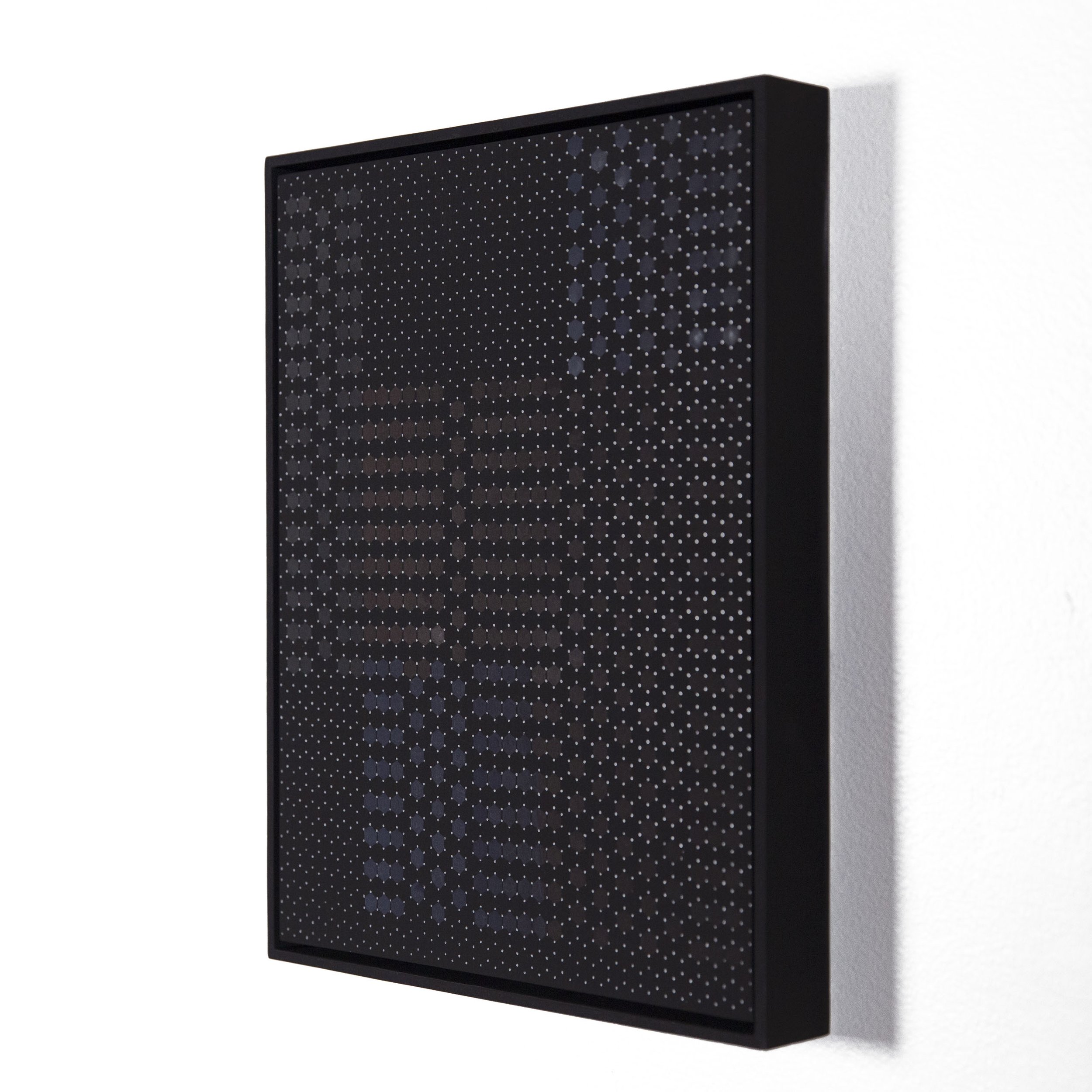
I see this connection between my paintings and your poetry in how elevated and exquisite your poems are when you talk about the South or your family or where we grew up. You make it into this magical place of light and trees and birds and dogs, the roses from your uncle’s garden, but it also has this real “low” quality to it as well. You talk about Dr Pepper and soap operas and the old cheap motel where we used to go swimming in the pool and the cigarette machine that was there. I think it’s interesting that we’re both from the same place that we’re trying to elevate, while at the same time [we] recognize the “low.”
Cy Twombly (of Rockbridge County, Virginia) has this incredible sculpture in the form of a spade. It’s whitewashed, so it feels like an old Greek or Roman sculpture but it is actually one of those big straw fans my sister had hanging above her bed in childhood as a decoration that we would have gotten from the flea market for like two dollars. You saw them all over homes in the South. They are probably hanging in one of your aunt’s houses.
ANNIE: Your work also explores how that “high art” abrades against, contradicts, rhymes with the poor South.
I realize there’s a real spirit about where we come from, a sense of pride in how much we can do with very little, and that’s a huge place of inspiration for me.
ALISON: Another aspect to being where we are from is searching for information. You can’t necessarily see the “high art” in the flesh but you can live in the library. In high school we kept our noses in books and the old New Yorkers your mom would bring home from one of her home-health patients. Your source can’t just be where you are from. There’s a lot of other things that I weave into what I make that are not just about where I’m from. But my art is coming through that lens of place.
When I moved to the Northeast after college, I think there were some moments when I would say something with the sound of home in it and it wasn’t understood. Or I mispronounced a word because I’d never heard it said, I’d only read it. I think that really imprinted itself in my mind that I was from a different place. At the same time I was interested in learning the Italian language. The more I stayed there the more my accent diminished because I felt like I was judged for it and it made me very uncomfortable. It made me change the way I spoke. I was so embarrassed.
Now I realize there’s a real spirit about where we come from, a sense of pride around how much we can do with very little and that’s a huge place of inspiration for me.

A Poem Meant for Singing
“F. B. Gummere describes the ballad as ‘a poem meant for singing…probably connected in its origins with the communal dance, but submitted to a process of oral tradition among people who are free from literary influences.’”
—Encyclopedia of Poetry and Poetics
ALISON: The title for my next show that opens in New York City on May 3, I stole from one of your poems and it includes the word “low.” It’s the poem you wrote for your daughter in the small chapbook—“Make it soft, make it low.” I knew the reference immediately. I am curious what you were thinking about when you titled that small poem?
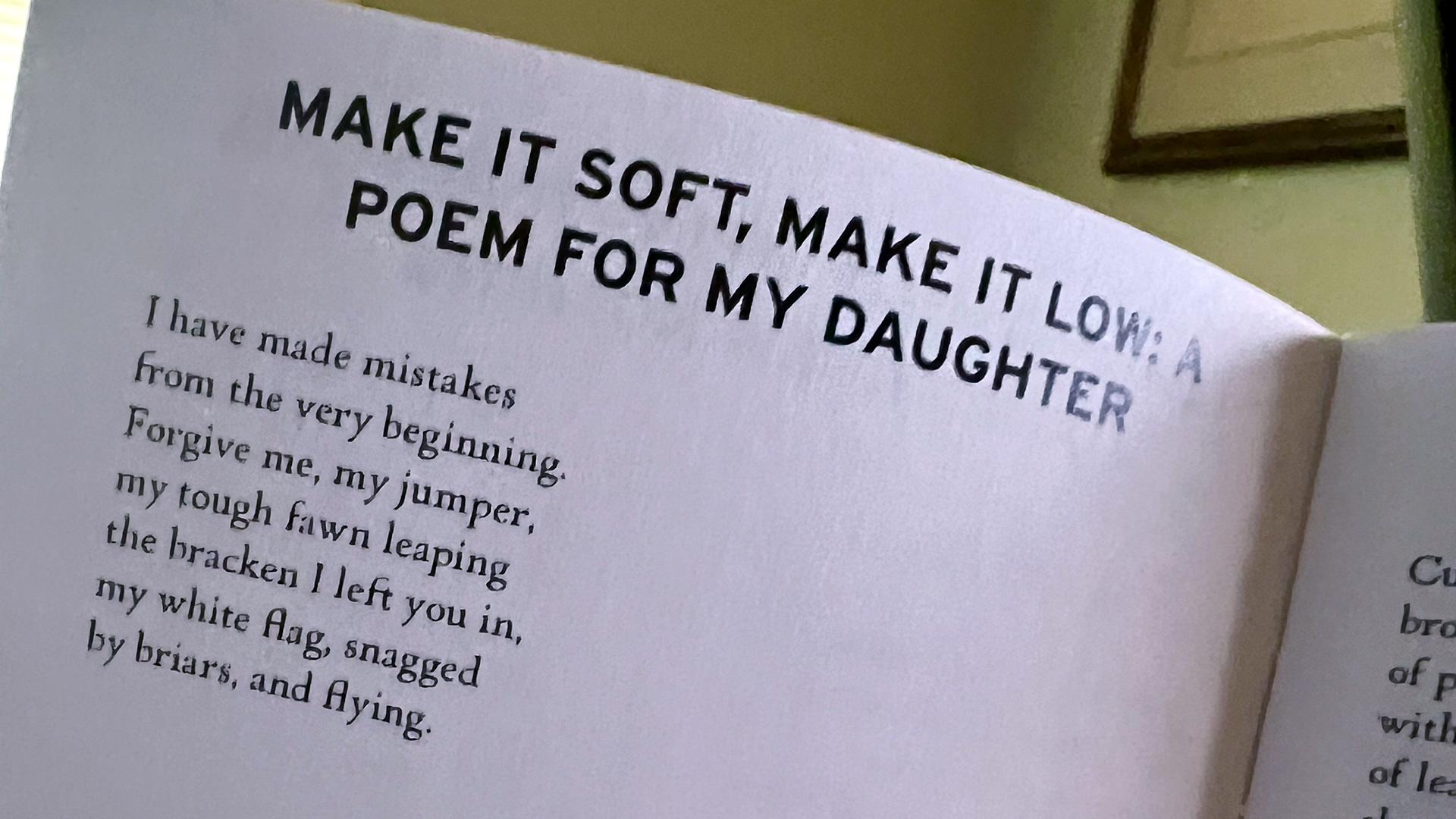
ANNIE: I always liked the tactile sense of those lines. One way of understanding the song is that it is about some form of finding a safe place, finding a place to rest, finding a place to come together.
ALISON: When I first read the title of that poem I knew exactly where it was from because we have such a similar language, a similar resource of music and place. I have very clear memories of us being in a smoky bar in Roanoke, listening to that song being played by your husband’s band.
ANNIE: I guess I had always heard that song. Like you said it was sort of in the atmosphere of how I grew up, but I really became aware of it as this compelling work of art at that time in my life.
ALISON: It resonated so much with how much change I’ve had in the past four years in terms of moving back South and having these sorts of provisional places to sleep. I’m also thinking about Italian frescos of [the Virgin] Mary’s life and how she’s traveling out into wilderness and laying down in a little shed. That song holds the history of painting but also has a personal connection.
ANNIE: For me, that lyric points to the fragility of place and relationships. What is the “it” in that construction—“Make it soft, make it low? How soft is a relationship? How can you make the relationship softer and kinder?

Tell Stories
“Ballads tend to be narrative poems, poems that tell stories.”
—Connections: A Hypertext Resource for Literature
ALISON, on my mother: She had an eye and an ear for fine things.
ANNIE: What does that mean?
ALISON: Maybe it’s just how you set a flower in a vase or pull back your hair. It’s a sensibility. It’s not accidental. Looking at the forms of the South in terms of old buildings, for example, and how there’s architecture without an architect. There’s a real intuitive sense of being built, things around you cobbled together. There’s a natural form of collage that’s happening. Beauty is an important thing.
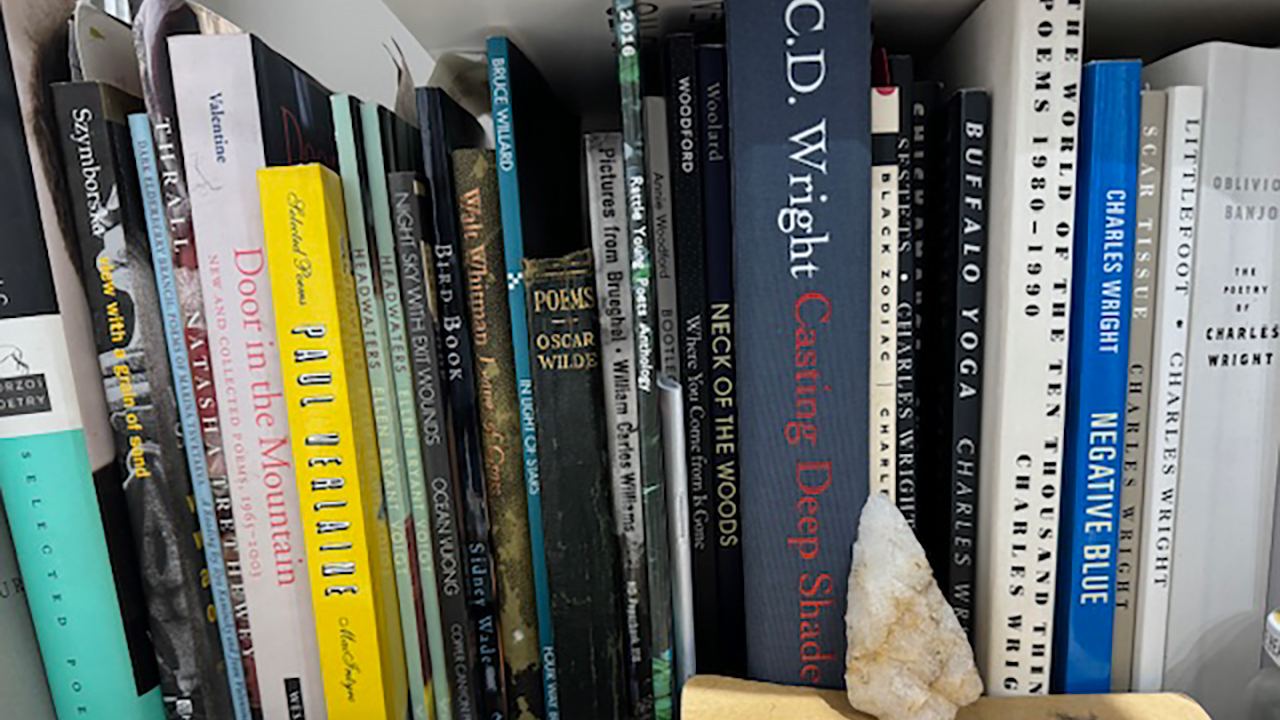
ANNIE: Especially when you don’t have a lot of ways to access it and not a lot of outside awareness that there is beauty where we come from.
ALISON: When I lived in Brooklyn it became a really weird experience of living inside a city—how much I desired to see beauty. I remember when I came back down South during COVID just being knocked out by the beauty of being back in a natural landscape—the birds, the mountains surrounding you. I think I was climbing a mountain every other day when I got back. I was just so turned on. Even though when I was living in the city I would go out and look at really beautiful art every week and there’s the Met, the symphony. Even the grind of NYC is a kind of beauty, but it was so nice to be back in the South because it’s all nature. The speed at which everything is done is so much slower. Do you think about speed when you are writing?
ANNIE: I have never been intentional about it, but I was really struck by an insight from the poet Willie Carver in an interview on the Read Appalachia podcast where he said his poetry is meant to “pay homage to the poetry that's already in the way Appalachians talk”—the “richness of vocabulary,” “the idioms and expressions,” “the irony, the long meandering sentences that don't say what they really mean.” I feel like there’s a sense of time in that description. I also think about Charles Wright’s work, which you introduced me to.
I was really struck by an insight from the poet Willie Carver...where he said his poetry is meant to “pay homage to the poetry that's already in the way Appalachians talk”—the “richness of vocabulary,” “the idioms and expressions,” “the irony, the long meandering sentences that don't say what they really mean.”
ALISON: When I first read his work, I had no idea that he lives in Virginia and that he also spent time in Italy. The first poem I read by him was about a Chinese scholar who was living up in the mountains. It definitely made me think about Virginia, even though he never said the word “Virginia” in the poem. He has a deep connection to Italy and a deep connection to Virginia. There’s a real pace, sense of time in his work. How it’s spoken is not quick. You feel a sense of a Southern drawl in just the pace that you read it and I love that. It relates to my work, which is also slow. There’s not a lot of quick joy that I get in making my work. It’s a very slow process.
ANNIE: There is no quick way to make your paintings or look at them. Your paintings are inherently made of all this time. I learned in a workshop with Jesse Graves (a Tennessee poet, like Wright), that Wright always wrote lines with an odd number of syllables. Graves pointed out, “It’s such a subtle way to organize and arrange the lines, and build an underlying structure.” That reminds me of your rigorous and subtle use of geometries from Giotto in your paintings.
ALISON: My paintings are not a quick read. They are very slow paced and that’s the way Charles Wright’s poems are and I love them for that.

Listen for the Music
“Well before the written word existed, there was poetry; this much we know. For example, the ballad is an ancient form that tells a narrative in short stanzas, and it is the form that reveals song and poetry to be old friends.”
—Surface and Subtext: Literature, Research, and Writing
ANNIE: You’ve titled your paintings “ballads” as well—A Ballad (for the broken arm), A Ballad (for this pain in my heart), The Texas Ballads.
ALISON: I always think of a ballad as being a narrative and usually sung by a single person, a female singer. It’s really a surrendering of a very private space, very vulnerable. And I imagine generations of my family singing them to babies, to themselves as they worked. I love the idea of the ballad as a narrative form that can tell a story. I think abstract painting can do that.
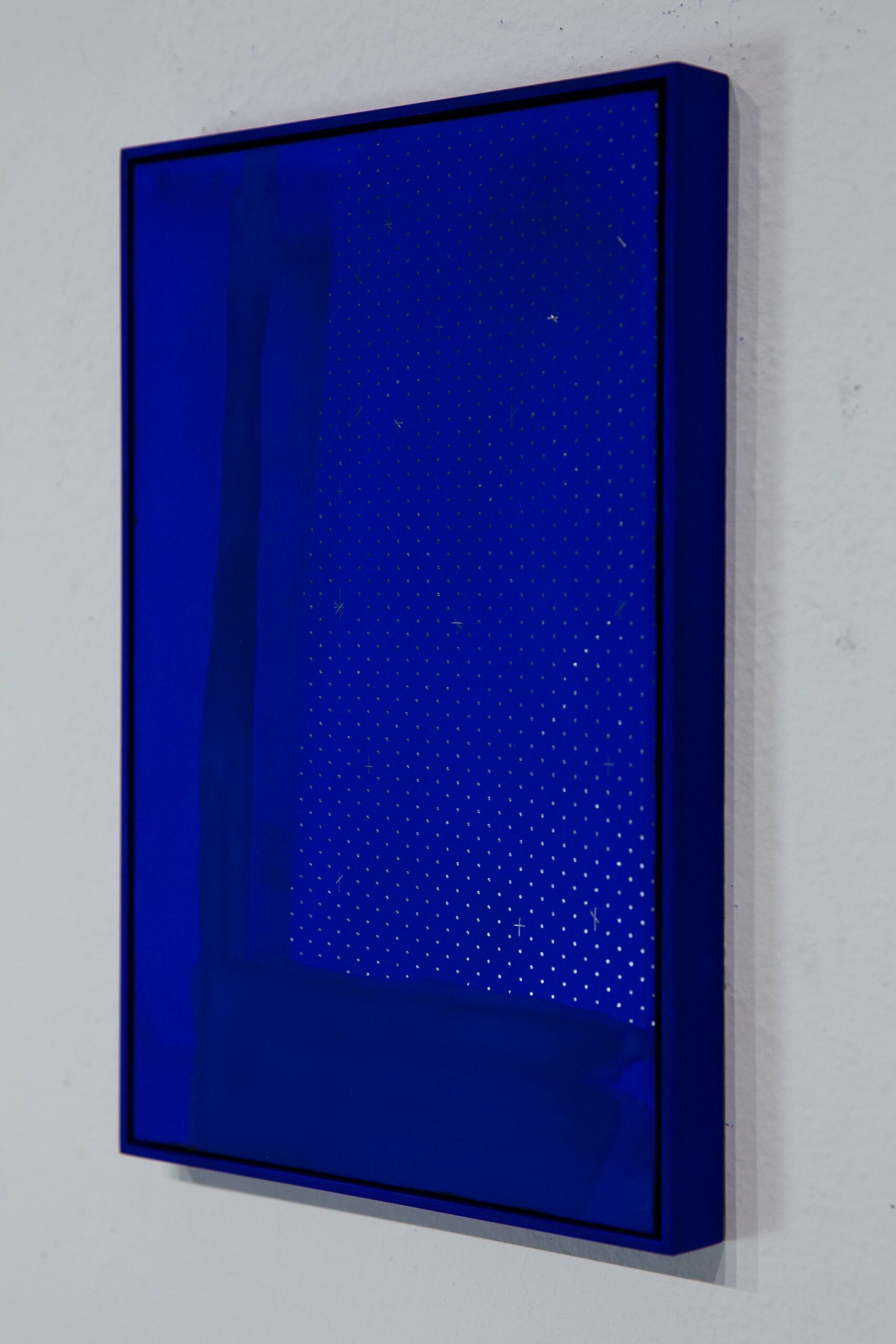
ANNIE: There’s a settling into the natural voice when mountain people sing ballads, whatever that natural voice is, even if it’s not a technically beautiful voice, that I love. Ballads are also a form of poetry, of course. Tell me more about your connection to poetry.
ALISON: The first book of poetry that I really, really loved as a young student in our high school library (which had the smallest poetry collection in the history of poetry collections) was a small book of Williams Blake’s poetry. It had these little wood-block prints that he made that went with the poems, so it was imagery with the poetry.
They’re some of the first poems I memorized:
Love to faults is always blind,
always is to joy inclined.
When I went to college, I wanted to be a poet. Maybe that’s why I love the poets so much because you all are choosing to do an impossible thing. You’re not paid very well, if at all for it. You work in a real solitude. It’s an old form. I always think you all should live forever. You should have the reward of having the longest lives to make your work. I call you my Poet Eternal because I just think you’re the Word, you’re my Word. You’re the one who’s writing down the history and making it permanent. A testament.
ANNIE: The fact you actually read my work is maybe all that matters. Otherwise, I feel like the old saying, “If you want to keep a secret, put it in a book of poetry” usually applies because it’s not often our work gets read at all, much less closely.
ALISON: I think abstract painting could have the same thing said about it. My work is a place where whole histories reside in terms of my connection to the work of my family, to the current state of things in my life. They hold so much. And poems do that too with such efficiency, such economy.

Include the Supernatural, Physical Courage, and Love
“Certain common characteristics of these early ballads should be noted: the supernatural is likely to play an important part in events, physical courage and love are frequent themes, the incidents are usually such as happen to common people (as opposed to the nobility) and often have to do with domestic episodes.”
—Encyclopedia of Poetry and Poetics
ALISON: I thought about titling my newest painting for that basketball player DJ Burns Jr., who played for NC State during the March Madness championship—this huge guy pirouetting, making these incredible shots. The joy on his face was so inspiring. To be so serious but to be just filled with that much joy. I watched so many basketball games when I made that painting.
I played basketball as a young girl. My dad put up a basketball goal for me when I was seven or eight and I just did it incessantly over and over. It was painting before I discovered painting—trying to be better and better.
I love the NC State story during this recent March Madness because they were ranked sixty-third in the country, made it to the Sweet 16, and then they made it all the way to the Final Four. They came out of nowhere. Not only were they winning, but the joy, the happiness with which they were playing was so different from every other team that looked so serious and just beaten down. Just sheer joy. That’s an amazing spirit to have amongst a team of players. From the bottom to the top.
It's really rad to see someone pull up for a three-pointer from nearly half court and this rainbow arc of a ball falls into the net with a swoosh. I just love it.
ANNIE: That makes me think of the paintings you are doing in different geometric shapes—arches, diamonds, triangles.
ALISON: There are also beautiful old Italian paintings made in that arch shape. Minimalist painters in the 60s were making those shapes. I made a blue triangle that I titled for a painter named Blinky Palermo who also made blue triangles. But since the paintings in that show were going to Texas, I also named them after Texas singer-songwriter songs. The one for Blinky was named “Hands on the Wheel”—that old Willie Nelson song. It talks about seeing yourself in someone else. I love that connection to history, to art history, not just my familial history but the history of painting.
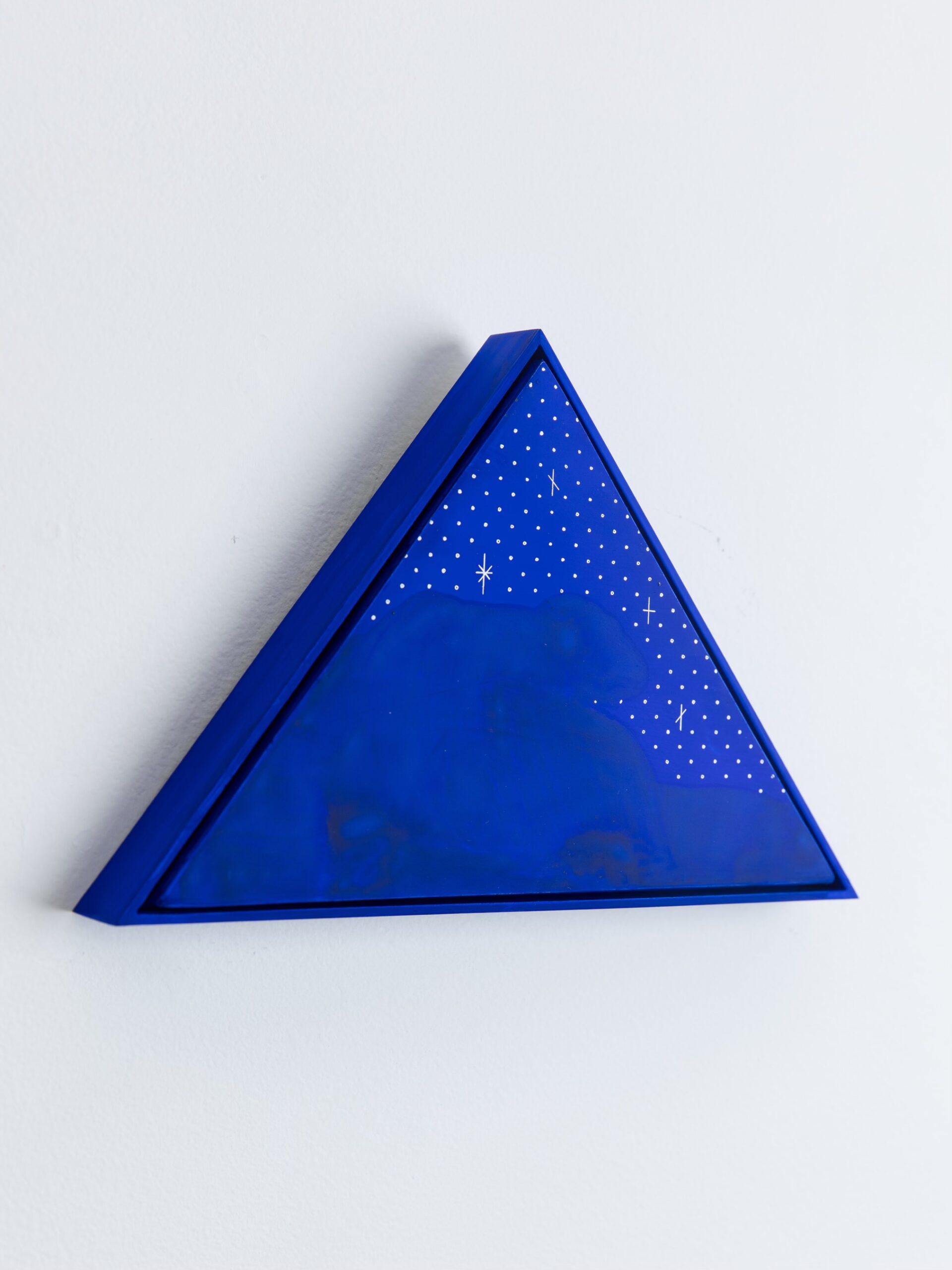
ANNIE: I love how you have this completely worked-out idea about how country music informs the history of painting.
ALISON: When you are obsessed with something, like I am with painting, you see it in everything.
The diamond shape I use in my paintings is my granny—in an old photograph she is wearing this beautiful skirt that I bet her mother made or that she made and she’s fanning it out in front of this clapboard house as she takes on the shape of an imperfect diamond.
I am also thinking about these rocks I find when I go walking that are in the shape of diamonds and they are covered in mud, in that red clay of where we are from.
ANNIE: Speaking of shapes, when you gave me a copy of The Gorgeous Nothings, that book of facsimiles of Emily Dickinson’s envelope poems, it opened something up in me. I started writing poetry again. Some of the shapes you are playing with now remind me of some of her shapes.
ALISON: She recognized those envelopes also as beautiful forms and oriented them in the right direction to write her work. It goes back to our early part of our conversation about someone teaching you about beauty. The fact that she found such beauty in a scrap of something.
ANNIE: And then became very intentional, preserving that scrap and then the poem corresponding to the form of the scrap.
ALISON: When you look at her published poems that aren’t on the scraps of paper, you can see the poem trying to maintain that form, off the scrap of paper and on the book page. They’re odd.
The beauty of the South—hidden amongst all that’s going on are these incredible scholars, or Charles Wright, or musicians, all these hidden treasures. People are hidden away and doing their work.
ANNIE: I really think we have misunderstood her work. It is supposed to be paper art. She was doing something no one understood and so when they published her work they typeset it the way you would a normal poem. That book opened up my eyes to how strange her work really was, how you can do whatever you want as an artist. Speaking of doing whatever you want, the last time I was in your studio you were blasting that new Beyonce album.
ALISON: I love how she talks about how she is from Texas.
ANNIE: Beyonce is from Texas and yet some country music radio stations have refused to play her.
ALISON: That makes her more interesting—that’s the kind of place we come from: you can put us down, you can give us meager wages, you can do all this and we’re still gonna survive and get by. Now we’re back to country music: we’re back to outlaw.
ANNIE: Beyonce said, “This is not a country music album, this is a Beyonce album.”
ALISON: What’s more individualistic than that?
ANNIE: That makes me remember how Rhiannon Giddens, who played the banjo intro to the first song released from Beyonce’s new album, says there is a “general Piedmont weirdness” where we are from.
ALISON: The surprises within communities—the beauty of the South, hidden amongst all that’s going on are these incredible scholars or Charles Wright or musicians, all these hidden treasures. People are hidden away and doing their work.

Use Repetition
“A ballad often has a refrain, a repeated section that divides segments of the story.”
—Connections: A Hypertext Resource for Literature
ALISON: I’ve been thinking a lot about those shapes I’m making and fucking around in my studio. All these wild heathens in my family. People who were running liquor, a great uncle who traveled around with the rodeo—he was a Marlboro man—and a distant great-great-aunt who did tricks on airplanes as they were flying in the air. These crazy characters. I feel that energy inside of me but working inside of a strict language. I imagine you feel this too, working inside your strict language of poetry. How do you do that within these restrictive modes of working? I am looking for more fun and irreverence. Doing odd things as a form of rebellion, which I also know is inside of me.
ANNIE: That outlaw thing again.
ALISON: Yeah, it’s the outlaw thing again. I feel like the shapes in my paintings are about that. They are so imperfect and then they have this order on them so they get to be both things at the same time, which is kind of like my paintings. They appear to be something so plain, but when you approach them, there are these layers. Like the way you make your poems, these dualities. I really do feel let loose or something and I do think it is something to do with being in the South. There’s some energy here.
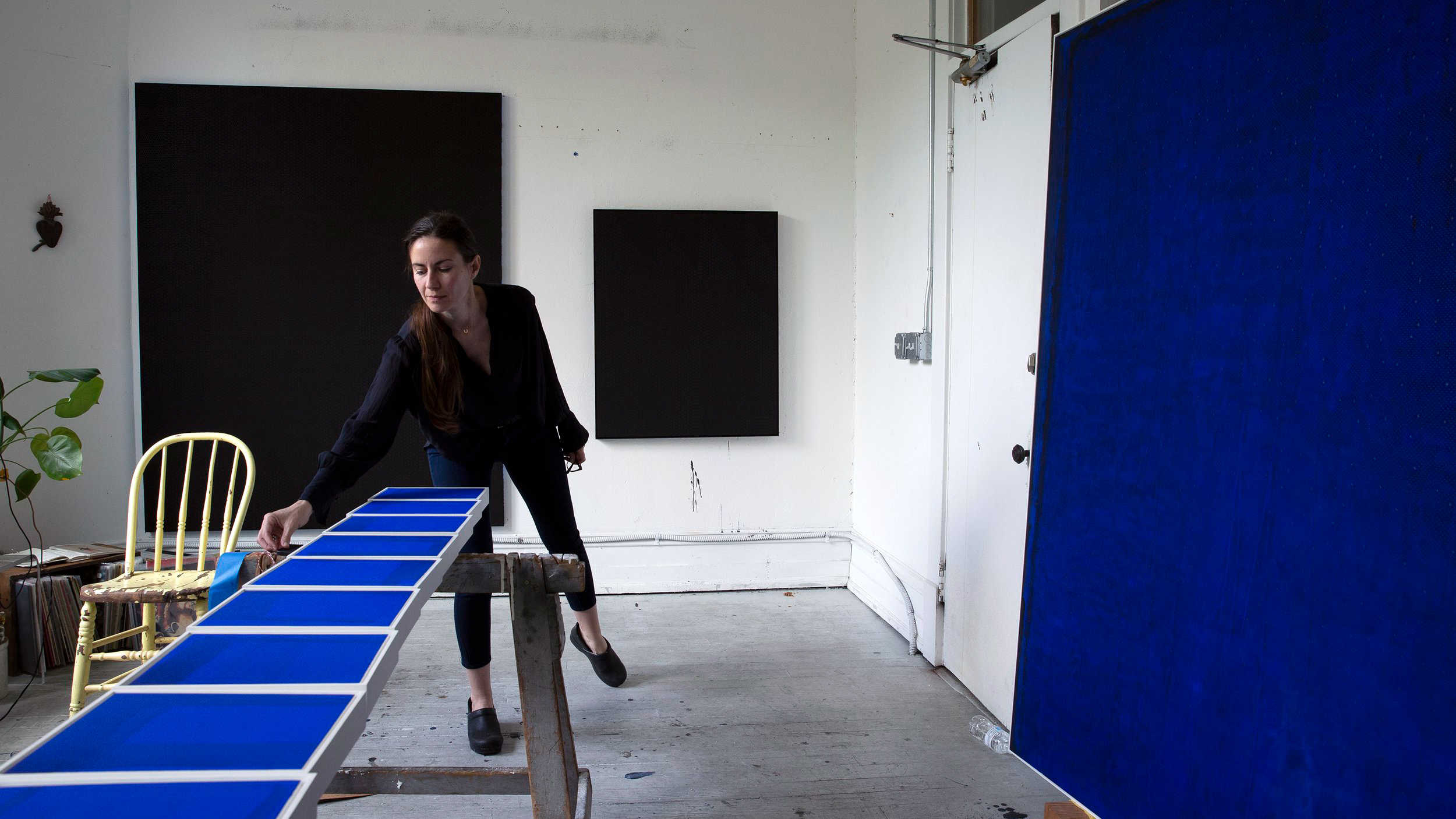
ANNIE: The inarticulate spirit of something wild that’s also central to the art. Your paintings refuse to be easily understood or photographed. They are plainspoken. You told me once to write poetry the way my father speaks.
ALISON: The more I think about my paintings, I think about how they connect to this place my mother and father are from. When you look at the paintings, they look monochromatic, like nothingness from a distance, and you could say that about an uneducated person from the South, from a distance. Let’s say they have no formal education. They are missing some teeth. They have a drawl that might make them be considered dumb and the paintings kind of do that too, from a distance. They say, “I’m nothing. Then, as you approach them, they are covered in these very intricate, careful, deliberate decisions and if you stick with it long enough, they open up. They are really wide. They are very generous paintings. As I’ve grown older, I appreciate this beautiful, saturated, multidimensional reality that exists within things that appear to be so plain.
Talk to John Hall [Alison’s father], who has a seventh-grade education, and he can name every tree, every plant. He can tell you about insects and birds and qualities of the soil and has just boundless information. You have to be so tuned in to be someone who has watched over the land and grown things and been a hunter—kind of like your dad—these kind of silent types who are paying attention to every detail of their surroundings.
My birthday is Monday, and I’ve been really thinking about what I want to do to mark the new year: I’m going to get my dad to take me down to this place where he grew up, where his family were sharecroppers. My father was raised by his grandparents (born in 1896) in Wentworth, North Carolina. They grew everything they ate and they would only buy a few things, like coffee, salt, and sugar. They would buy on credit and then pay off their bill when they went to the Chapel Hill area to sell their tobacco.
They had no running water in the house, and my dad would have to go down to a spring on the property to get water and carry it up back to the house. Every time my dad goes back to Wentworth, he walks back to the spring.
They had no running water in the house, and my dad would have to go down to a spring on the property to get water and carry it up back to the house. Every time my dad goes back to Wentworth he walks back to the spring. He really wants to go and clean the spring out again.
ANNIE: My Uncle Edgar always said salamanders meant a spring had good water.
ALISON: Yes! My dad wants to drink from the spring. That’s kind of what the paintings want to do, too. I want to drink the water. As a young woman, I wanted to run from all of this. It wasn’t the world I wanted to be from or to be a part of. I really tried to escape it so many times, but as I’m aging, I want to go back to the spring.


